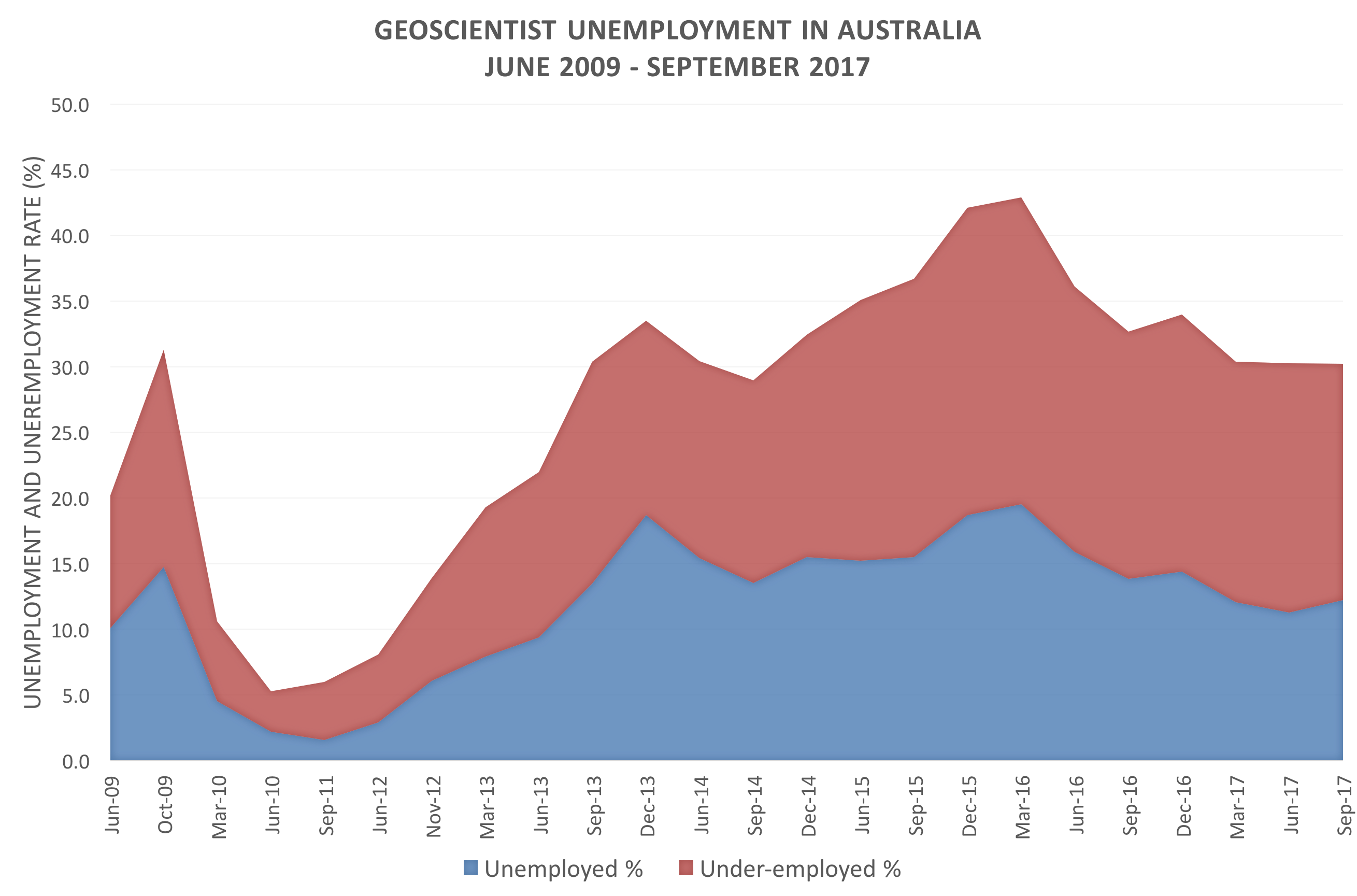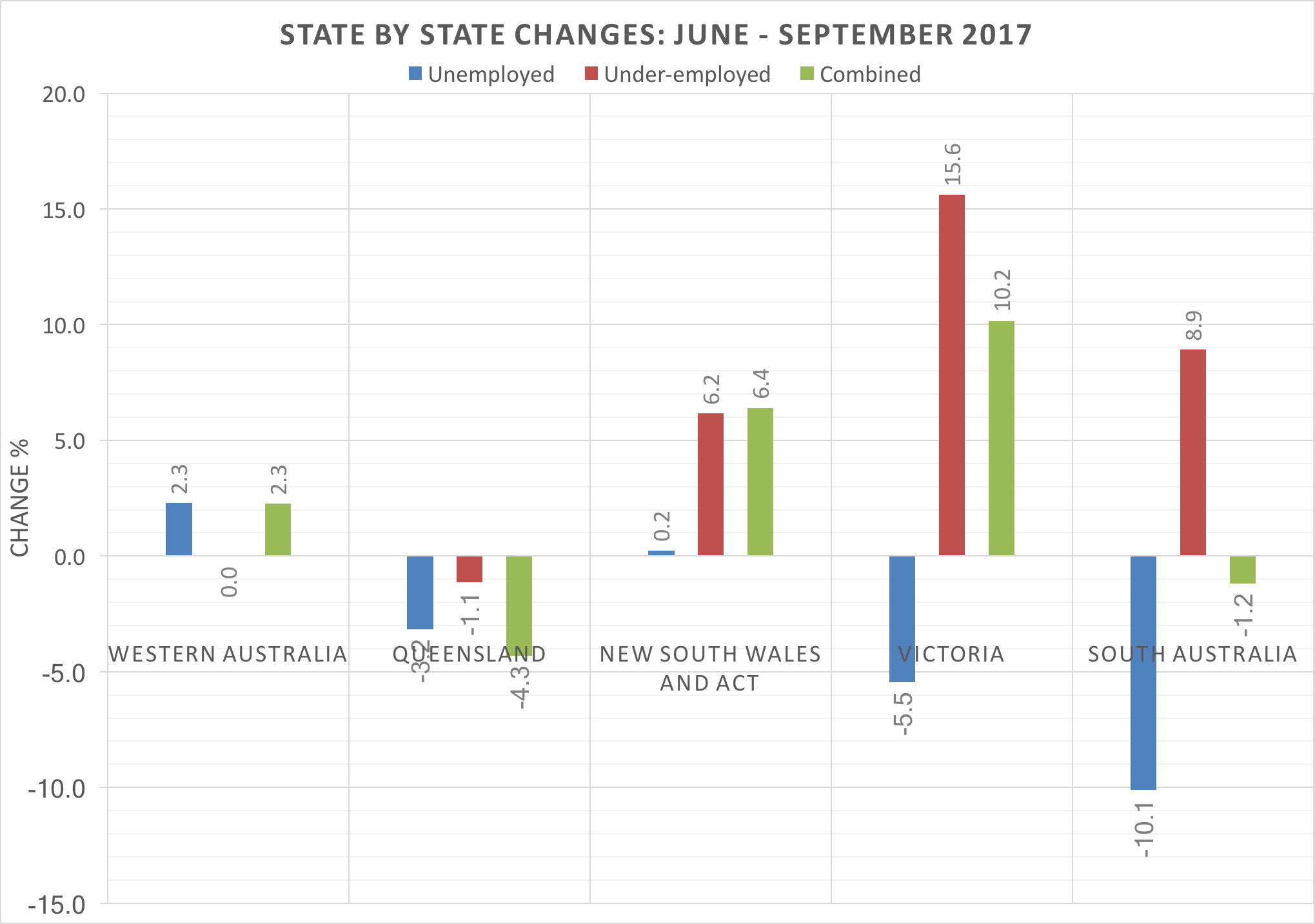The latest quarterly survey of Australian geoscientist employment, covering the third quarter of 2017, shows that employment prospects for geoscientists have remained unchanged since March 2017, despite anecdotal evidence pointing to an upturn in mining and exploration industry activity. The survey was conducted during October 2017 by the Australian Institute of Geoscientists (AIG).
 Figure 1. Geoscientist unemployment and under-employment in Australia June 2009 – September 2017
Figure 1. Geoscientist unemployment and under-employment in Australia June 2009 – September 2017
The national unemployment rate at 30 September 2017 amongst Australia’s professional geoscientists was 12.2%, up slightly from the 30 June figure of 11.3%. Underemployment amongst self-employed geoscientists for the same period, however, fell to 18.0% from 19.0%.
The combined figures point to no improvement in employment prospects for the geoscience professions as a whole since March 2017.
AIG spokesperson Andrew Waltho expressed surprise at the flat result in the latest survey. “Australian geoscientists were looking forward to an improvement in the employment situation in the September survey due to what appeared to be improved sentiment amongst professional geoscientists”. “The survey results, however, don’t contain any good news”. “Unemployment in the mineral exploration sector continues to sit at around 12%”. “The surprise in this survey’s results was that unemployment in metalliferous mining geology increased from 5.2% in June to 11.0% at the end of September”.
The survey results point to:
“We need to remember too that for every job lost in exploration and mining in Australia, three to four other jobs are lost in the broader community” Mr Waltho said. “Initiatives announced recently by both federal and state governments to promote investment and sponsor drilling of advanced exploration projects don’t appear to be having an impact across the exploration and mining sector”. “This could be due to none of the initiatives announced tackling the thorny question of access to land and perceptions of growing sovereign risk in Australia”. “Both of these have a negative impact on investment” Mr Waltho said. “Recent talk of royalty and tax increases in Western Australia appear to have had an immediate impact on industry sentiment which has already had a negative impact on geoscientist employment” Mr Waltho said.
State unemployment rates were relatively uniform, between 11.0% in New South Wales to 12.3% in Western Australia (Figure 2). Underemployment results amongst self-employed geoscientists were more broadly spread, ranging from 14.7% in Western Australia to almost 28% in South Australia. Employment conditions improved in Queensland, and unemployment also fell in both Victoria and South Australia. In all other states, however, unemployment and underemployment rates were static or increased (Figure 3).

Figure 2. Geoscientist unemployment and underemployment by State
 Figure 3. Changes in state unemployment and underemployment during Q32 (june – September) 2017
Figure 3. Changes in state unemployment and underemployment during Q32 (june – September) 2017
Some 492 responses were received to the survey.
Brisbane, 10 November, 2017